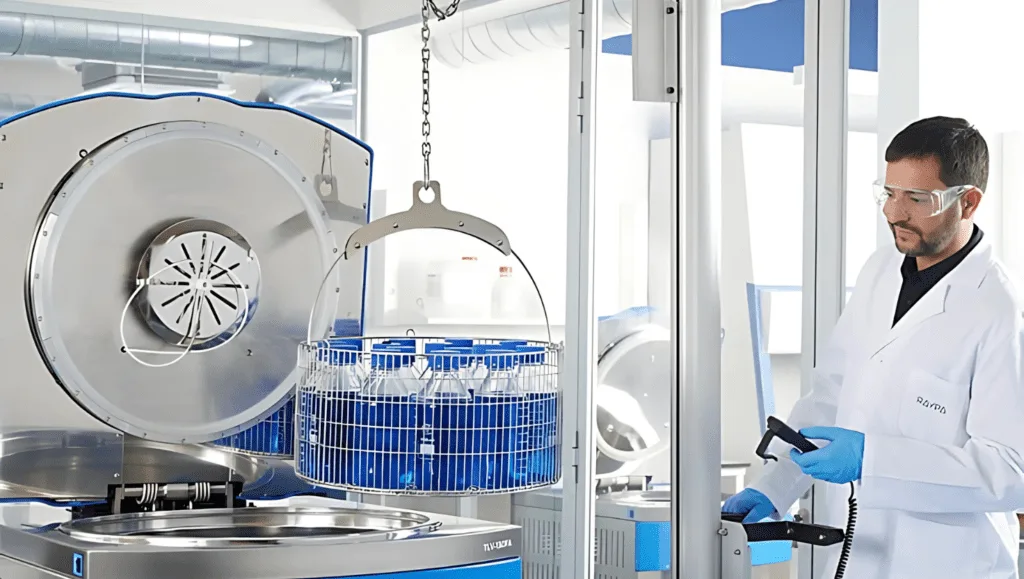How to Choose the Right Autoclave for Your Laboratory Needs
Autoclaves are crucial in laboratories, research facilities, and medical institutions for sterilizing equipment, glassware, and biological waste. The right autoclave can enhance efficiency, ensure compliance, and reduce long-term operational costs. This article will guide you through the critical factors to consider when choosing an autoclave, including technical specifications, sterilization methods, compliance standards, and the top features provided by leading manufacturers like Raypa and Jeiotech.
Understanding Autoclave Sterilization
What is an Autoclave?
An autoclave is a device that uses high-pressure steam to eliminate bacteria, viruses, fungi, and spores from laboratory instruments and materials. The sterilization process involves heating water to create pressurized steam, which effectively penetrates objects and kills microorganisms. Apex Scientific provides autoclaves that are engineered to meet diverse laboratory needs, from general sterilization to specialized applications.
Pre-Vacuum vs. Post-Vacuum Autoclaves
- Pre-Vacuum (Pre-Vac) Autoclaves: These remove air from the chamber before introducing steam, ensuring better penetration, especially for porous materials, wrapped instruments, and large loads.
- Post-Vacuum (Post-Vac) Autoclaves: These extract steam and moisture after sterilization, speeding up drying and preventing recontamination.
Which One Should You Choose?
- Pre-Vacuum Models: Ideal for more efficient sterilization, especially if you need complete air removal.
- Post-Vacuum Models: Best for applications requiring fast drying, such as sterilizing surgical instruments or lab glassware.
Importance of Drying in Autoclaves
Some autoclaves include built-in drying functions to remove residual moisture after sterilization. This is crucial for laboratories handling:
- Surgical or medical tools that must remain sterile.
- Glassware and lab instruments that need to stay moisture-free to prevent contamination.
- Materials prone to rust or degradation, where moisture retention can cause damage.
How Do Autoclaves Achieve Drying?
- Vacuum Drying: Uses negative pressure to remove steam and moisture.
- Heat-Assisted Drying: Uses heating elements to evaporate residual moisture.
Recommendation: If drying is a priority for your application, ensure the autoclave has a built-in vacuum drying function. Explore our Raypa autoclaves for high-performance models with advanced drying capabilities.
Compliance with GMP & 21 CFR Part 11 Standards
What is GMP?
Good Manufacturing Practice (GMP) ensures that products are consistently produced and controlled according to quality standards. Laboratories in pharmaceutical, biotech, and medical industries must comply with GMP regulations to ensure product safety and consistency.
What is 21 CFR Part 11?
For laboratories operating under FDA regulations, 21 CFR Part 11 compliance is essential for managing electronic records and signatures.
- Does Your Autoclave Need to Be 21 CFR Part 11 Compliant?
- If you work in a regulated industry (e.g., pharmaceuticals, clinical trials, medical device manufacturing), yes.
- For labs that don’t need electronic recordkeeping compliance, a standard autoclave might be sufficient.
Built-in Bowie Dick and Vacuum Leak Tests
What is the Bowie Dick Test?
The Bowie Dick test is a diagnostic test for pre-vacuum autoclaves to check steam penetration and air removal efficiency, which is essential for sterilizing porous loads like fabrics or wrapped instruments.
What is a Vacuum Leak Test?
A vacuum leak test ensures that the autoclave chamber’s integrity remains intact and that no air leaks interfere with the sterilization process.
Automatic Door Closing: Why It Matters
Automatic door closing enhances safety and usability, especially in high-throughput labs where frequent sterilization cycles are needed. It also ensures sterility in GMP-compliant environments, where operator-independent sealing reduces human error.
Other Key Considerations When Choosing an Autoclave
Capacity & Chamber Size
- Small Benchtop Autoclaves: Ideal for low-volume sterilization in research labs.
- Vertical & Horizontal Autoclaves: Suitable for medium to high-volume sterilization.
- Large-Capacity Autoclaves: Best for industrial, pharmaceutical, and hospital use.
Loading Type
- Top-Loading: Space-saving, but may be less convenient for heavy loads.
- Front-Loading: Easier access, better for high-throughput workflows.
Cycle Types & Customization
- Preset Programs: Standard cycles for different materials (e.g., liquids, glassware, waste).
- User-Defined Cycles: Customizable parameters for specific applications.
Safety Features
- Pressure and temperature monitoring.
- Automatic shut-off mechanisms.
- Over-pressure protection.
Energy Efficiency & Maintenance
- Water and energy consumption impacts long-term costs. Consider low-water usage models for operational savings.
- Regular chamber cleaning and calibration will extend the lifespan and efficiency of your equipment.
Choosing the Right Autoclave for Your Needs
| Feature | Pre Vacuum Autoclave | Post-Vacuum Autoclave | Standard Gravity Autoclave |
| Best For | Porous loads, wrapped instruments | Fast drying, moisture-sensitive loads | Basic sterilization (liquids, simple tools) |
| Drying | Vacuum drying | Heat-assisted drying | Limited drying capability |
| Compliance | Suitable for GMP/21 CFR | Suitable for GMP/21 CFR | May not be GMP compliant |
| Cost | Higher | Higher | Lower |
Final Thoughts
Selecting the right autoclave for your laboratory in South Africa depends on your specific application needs, compliance requirements, and workflow efficiency. Whether you need advanced pre-vacuum models with built-in safety tests or a basic sterilizer for general lab use, Apex Scientific offers a wide range of Raypa and Jeiotech autoclaves to meet your needs.




